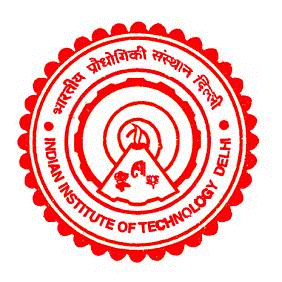Whenever something as grand and as controversial as Indo-Pak peace initiative and reconciliation is being talked of, there are bound to be sparks in the air (some would say of the hopeless romantic kind, while some would say fireworks that are a bad omen of things to come) . While some may dismiss the Aman Ki Asha advertisements, initiative and programs as romantic eye-gloss/eye-wash , I believe these are steps in the right direction and that more, rather than less, such initiatives are required in today’s time .
Left Brain thinking : a checkered history since nation state formation
Everyone knows the checkered history of Indo-pak relations since the nation states were formed in 1947, so no need to repeat that here. Suffice it to say, that there is sufficient grounds for both countries to be suspicious of each other (If India helped Bangladesh liberation to some extent, India has more current grievances like Kargil/Mumbai 26/11). But a new factor that has emerged recently in geo-politics is Pakistan struggling (some would say apparently) against its former allies, the Taliban. With the US pressure, alongside the Talibani backlash, it seems an opportune ground to make the Pakistan state realize that supporting terrorism is not a viable alternative in today’s realpolitik and there is no recourse better than to have healthy and peaceful relations with the Indian state.
Right Brain doodling: A romantic sufiana view of assimilation before the divide-and-rule
And yet, before the Britishers sowed the seeds of divide and rule and communal disharmony things were more or less hunky-dory in India and Mughals were accepted to a large extent as native kings (following the efforts of Akbar, the great) and a new language and culture of Urdu assimilated in the Indian stronghold. If one is to believe the sufiana poetry or poetry of poets like Kabir, one comes to the realization that there was a lot of assimilation and mutual respect and admiration between the communities/ the different states. Even the 1857 revolution was fought by all communities alongside each other, perhaps shaking the Britishers from their slumber and forcing them to sow seeds of divide and rule.
Whole brain fusings: War between nations versus Love between people
And yet, even when one focuses on post-independence history of Indians and Pakistanis, one has to contend that there are two histories- one that between the two nation-states which have always been at loggerheads and suspisious of each other and one between the people who despite reservations, suspicions and occasional overt ill-will, also paradoxically are so much embedded and enthralled by each others culture as to be indistinguishable. Be it ‘bakra kishton par’ and other pak dramas that enthralled India even as babari-masjid episode was at its peak, or the firm grip of Bollywood under which the Pakistanis live; be it Nusrut Fateh Ali khan saying that my beloved has returned home:-) to Hasan Jahangir enticing the winds to spread fragrance between the two nations (Hawa-Hawa) – the cultural ties have always been there and have fascinated us and kept us tethered to the fact that the person sitting cross-border is very much an Indian -sans nationality. Perhaps it is more politically correct to say that we are all pan-Indians/pan-Pakistanis.
Out-of-the-brain musings: Kashmir/Terrorism and Truth and Reconciliation
And yet, we will continue to live under the legacy of hatred, suspicion and ill-will till we finally sort out the underlying issues of Kashmir and Terrorism. I propose to go the way of Truth and Reconciliation of South Africa- Truth regarding Terrorism -its stark origins, effects and repercussions and reconciliation and re assimilation of those who might have been way laid by financial, religious or ideological factors; also Truth about accepting Kashmir’s present situation and reconciliation between India and Pakistan over the issue. Of course this is easier said than done. But when the people of both nations would show solidarity, would show that the states of India and Pakistan cannot play against what the people of India and Pakistan yearn deep in their heart- then their would be no looking back. Peace would no longer be a hope- it would be a real possibility.
Parting thoughts: Partition and Raksha Bandhan
While partition of 1947 was tragic on account of the lives lost, another partition springs to mind- the partition of Bengal in 1905. That had led people to celebrate Raksha Bandhan on a wide scale , by encouragements from Tagore and to this day has led to a tradition of celebration of Rakhi in Bengal. Perhaps we need another Raksha bandhan celebration- this time across the Indo-pak border- with citizens pledging to defend each other cross border, the nations states would soon follow suit. There is a strong need of the hour to incorporate raksha bandhan in the Aman ki Asha and similar cross-border campaigns. When we view each others as friends who can be counted on for security, all the historic ill-will and malice will vaporize and the aman ki asha will not just remain asha or mere hope , it will become a vishwas or faith grounded in reality. Lets all pledge to Aman Ka Vishwas and with our faith it will soon become a reality! Insha-allah!

![Reblog this post [with Zemanta]](https://i0.wp.com/img.zemanta.com/reblog_e.png)
 There was
There was 


